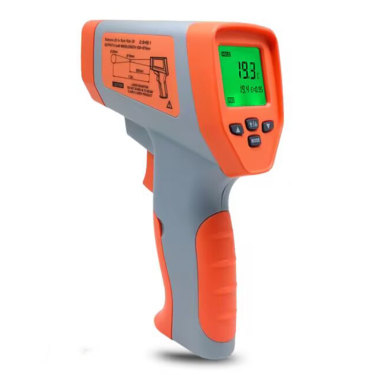
# How to Use a Cooking Thermometer for Perfectly Cooked Meals
## Why a Cooking Thermometer is Essential
A cooking thermometer is one of the most valuable tools in any kitchen. Whether you’re grilling, roasting, or baking, it ensures your food reaches the perfect internal temperature for both safety and taste. No more guessing if your chicken is done or your steak is medium-rare – a thermometer provides precise measurements every time.
## Types of Cooking Thermometers
Before using a cooking thermometer, it’s important to understand the different types available:
### 1. Instant-Read Thermometers
These provide quick temperature readings (usually within 2-5 seconds) and are perfect for checking doneness at the end of cooking.
### 2. Leave-In Thermometers
These remain in the food throughout the cooking process, often with a probe that connects to a display outside the oven.
### 3. Oven-Safe Thermometers
Similar to leave-in thermometers but designed to withstand oven temperatures without a separate display unit.
### 4. Infrared Thermometers
These measure surface temperatures without touching the food, ideal for checking grills or pans.
## How to Use a Cooking Thermometer Properly
### Step 1: Choose the Right Thermometer
Select the appropriate thermometer for your cooking method. For most home cooks, an instant-read digital thermometer offers the best combination of accuracy and convenience.
### Step 2: Insert Correctly
Insert the probe into the thickest part of the food, avoiding bones, fat, or gristle. For large cuts like roasts, check multiple spots.
Keyword: cooking thermometer
### Step 3: Wait for Stabilization
Allow the thermometer a few seconds to stabilize and give an accurate reading. Digital models will typically beep when ready.
### Step 4: Check Against Safe Temperatures
Compare your reading to these key internal temperature guidelines:
- Poultry: 165°F (74°C)
- Ground meats: 160°F (71°C)
- Pork: 145°F (63°C)
- Beef, lamb, veal (steaks/roasts): 145°F (63°C) for medium-rare
- Fish: 145°F (63°C)
### Step 5: Clean Properly
Always clean your thermometer after each use with warm, soapy water to prevent cross-contamination.
## Tips for Best Results
For the most accurate readings, follow these additional tips:
- Let meat rest for 3-5 minutes after cooking before checking final temperature
- Calibrate your thermometer regularly (many have a calibration feature)
- For thin foods like burgers, insert the probe sideways through the edge
- When roasting, check temperature away from the pan which can conduct heat
## Common Mistakes to Avoid
1. Not Checking Multiple Spots
Food can cook unevenly, so always check several areas, especially with larger cuts.
2. Touching Bone
Bones conduct heat differently than meat and can give false readings.
3. Relying on Appearance
Color is not a reliable indicator of doneness – always use your thermometer.
4. Not Accounting for Carryover Cooking
Food continues to cook after removal from heat, so remove it a few degrees below target temperature.
## Conclusion
Mastering the use of a cooking thermometer will transform your culinary results, ensuring perfectly cooked meals every time while maintaining food safety. With practice, you’ll develop an instinct for when to check temperatures and how to interpret the readings. Invest in
Comments are closed